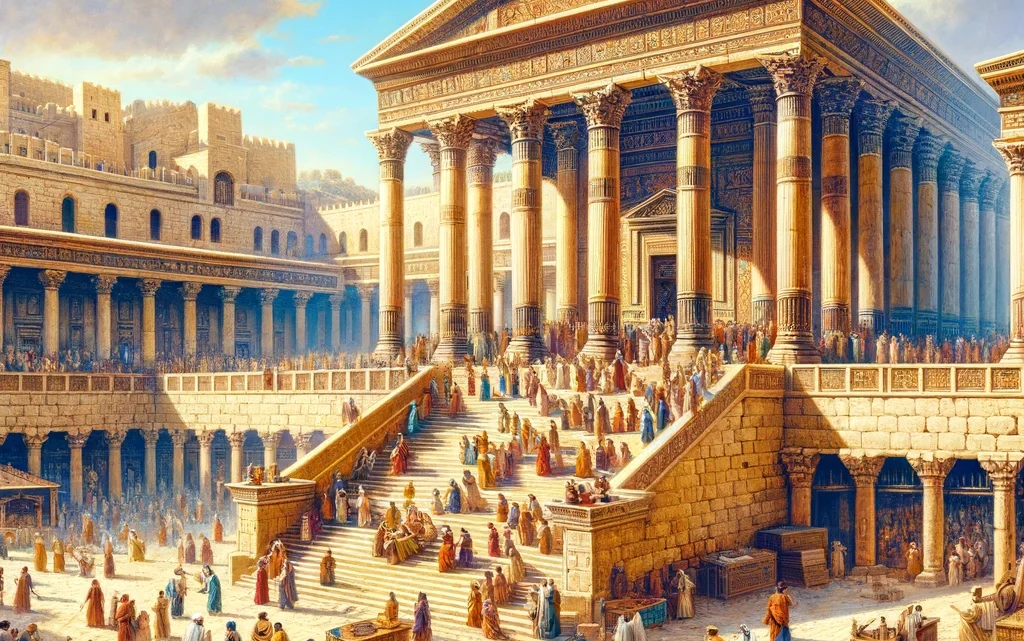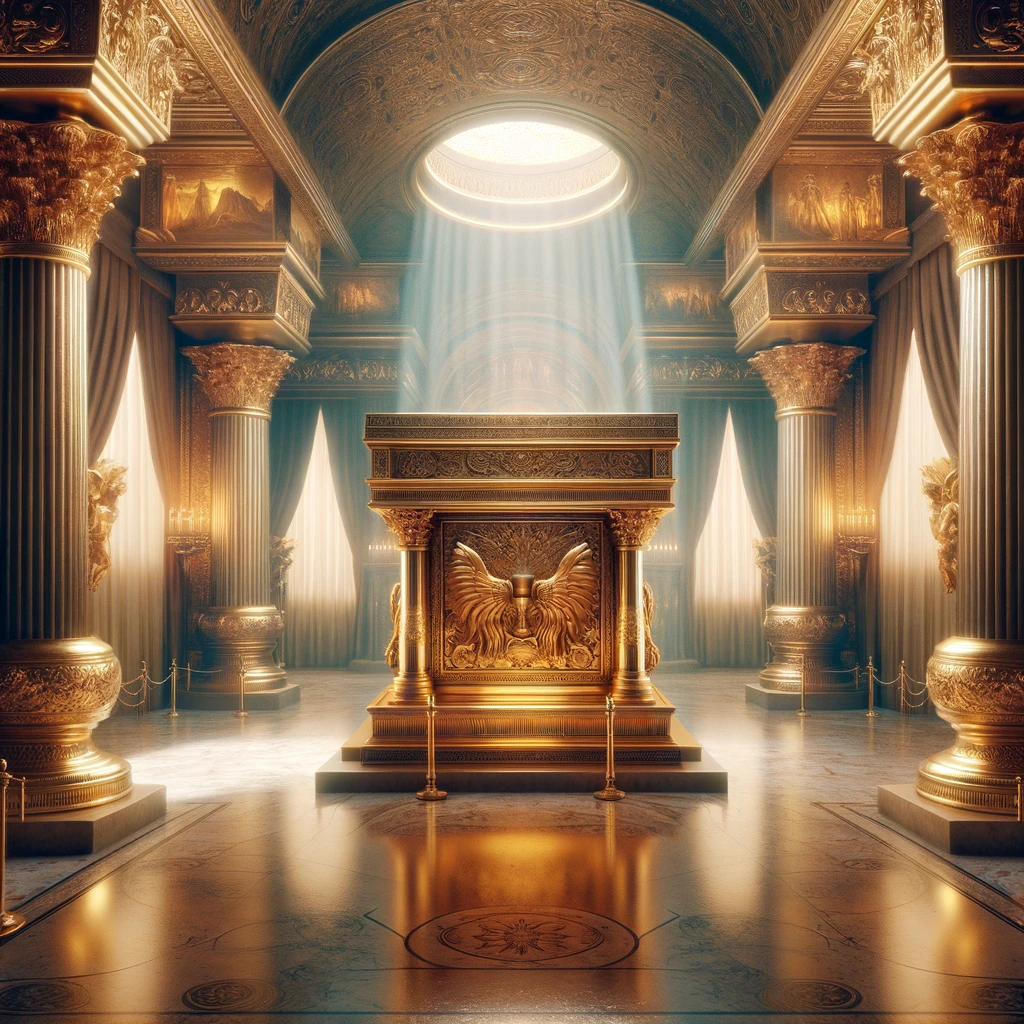The Ark of the Covenant: Its Journey from the Tabernacle to Solomon’s Temple and Beyond


The Ark of the Covenant stands as a profound symbol of Yehovah’s presence and covenant with the Israelites, from its origins in the Tabernacle through its residence in Solomon’s Temple, to its notable absence in the Second Temple. This sacred artifact’s journey encapsulates key moments of divine interaction and spiritual evolution within Jewish history.
The Ark in the Tabernacle
The story of the Ark begins with its divine blueprint. According to the Book of Exodus, Yehovah provided Moses with detailed instructions for building the Ark during their encounter on Mount Sinai. Crafted from acacia wood overlaid with gold, the Ark was designed to house the Tablets of the Law—tangible symbols of the covenant between Yehovah and His people. Cherubim of gold were set above the Ark, symbolizing divine majesty and the meeting point between Yehovah and Israel.
The Tabernacle, a portable sanctuary constructed by the Israelites during their desert wanderings, was designed to accommodate the Ark within its Holy of Holies. This setup underscored the Ark’s centrality to Israelite worship and the nomadic nature of their relationship with Yehovah. The Tabernacle served as a constant reminder of Yehovah’s presence, guidance, and protection, with the Ark at its core facilitating a profound sense of divine immediacy and accessibility.
Transition to Solomon’s Temple
The transition from the Tabernacle to the more permanent structure of Solomon’s Temple marked a significant evolution in the locus of worship. Solomon’s Temple in Jerusalem, constructed to house the Ark in its Holy of Holies, symbolized a new phase of settled life in the Promised Land. The Temple’s dedication was accompanied by divine signs, including the cloud of Shekinah, signifying Yehovah’s pleasure and presence.
The Ark’s Absence in the Second Temple
The return from Babylonian exile and the construction of the Second Temple heralded another pivotal moment. However, this time, the Ark was absent. Theories about its fate range from being hidden away to protect it from the Babylonians, to being lost or destroyed. Its absence left the Holy of Holies empty, a poignant symbol of loss, but also a space inviting reflection on Yehovah’s omnipresence.
Symbolic and Theological Implications
This absence marked a shift towards a spirituality that emphasized prayer, Torah study, and ethical living as pathways to divine presence. The lack of the Ark and the transition from the tangible divine manifestations of the Tabernacle and First Temple periods to a more abstracted faith reflected a matured understanding of Yehovah’s omnipresence and the importance of communal and individual piety.
Conclusion
The journey of the Ark of the Covenant—from its divine inception for the Tabernacle, its central role in Solomon’s Temple, to its mysterious absence in the Second Temple—illustrates the dynamic nature of Jewish faith. It highlights the transition from a nomadic relationship with Yehovah, characterized by the portable Tabernacle, to a settled existence in Jerusalem, and eventually to a more spiritualized worship in the absence of the Ark. Through these transitions, the enduring hope for divine presence, guidance, and the eventual restoration of the Ark in a rebuilt Temple underlines the resilient spirit of Jewish faith and expectation for the future.

